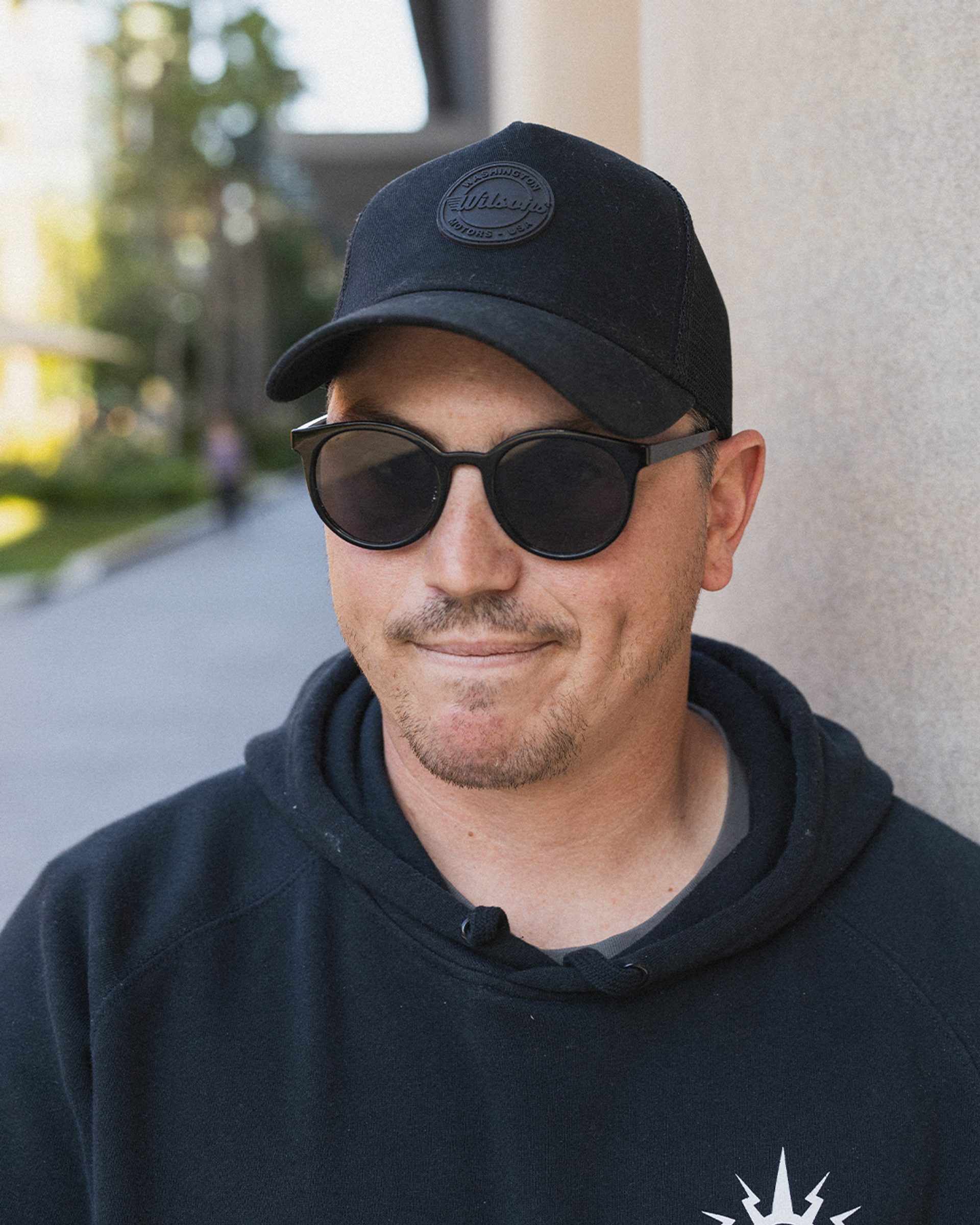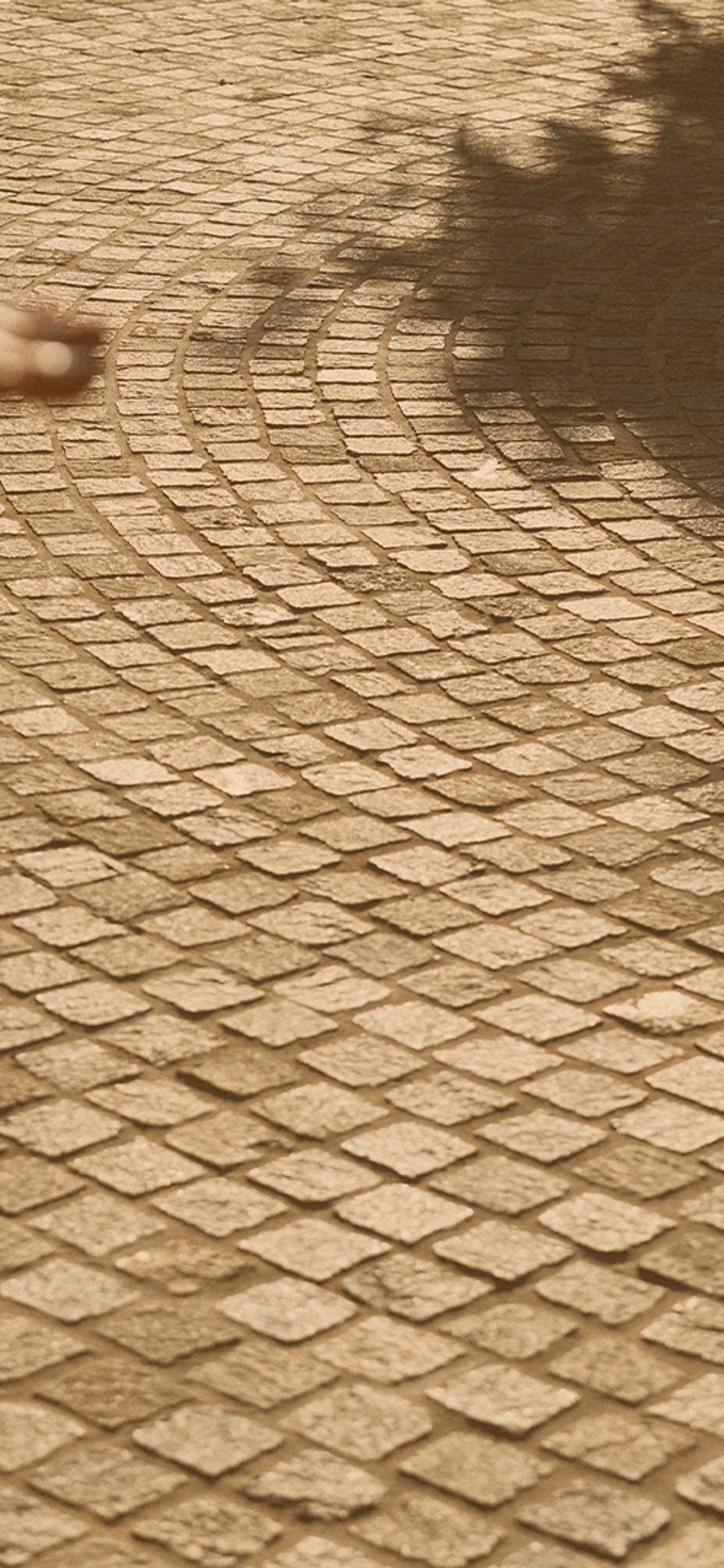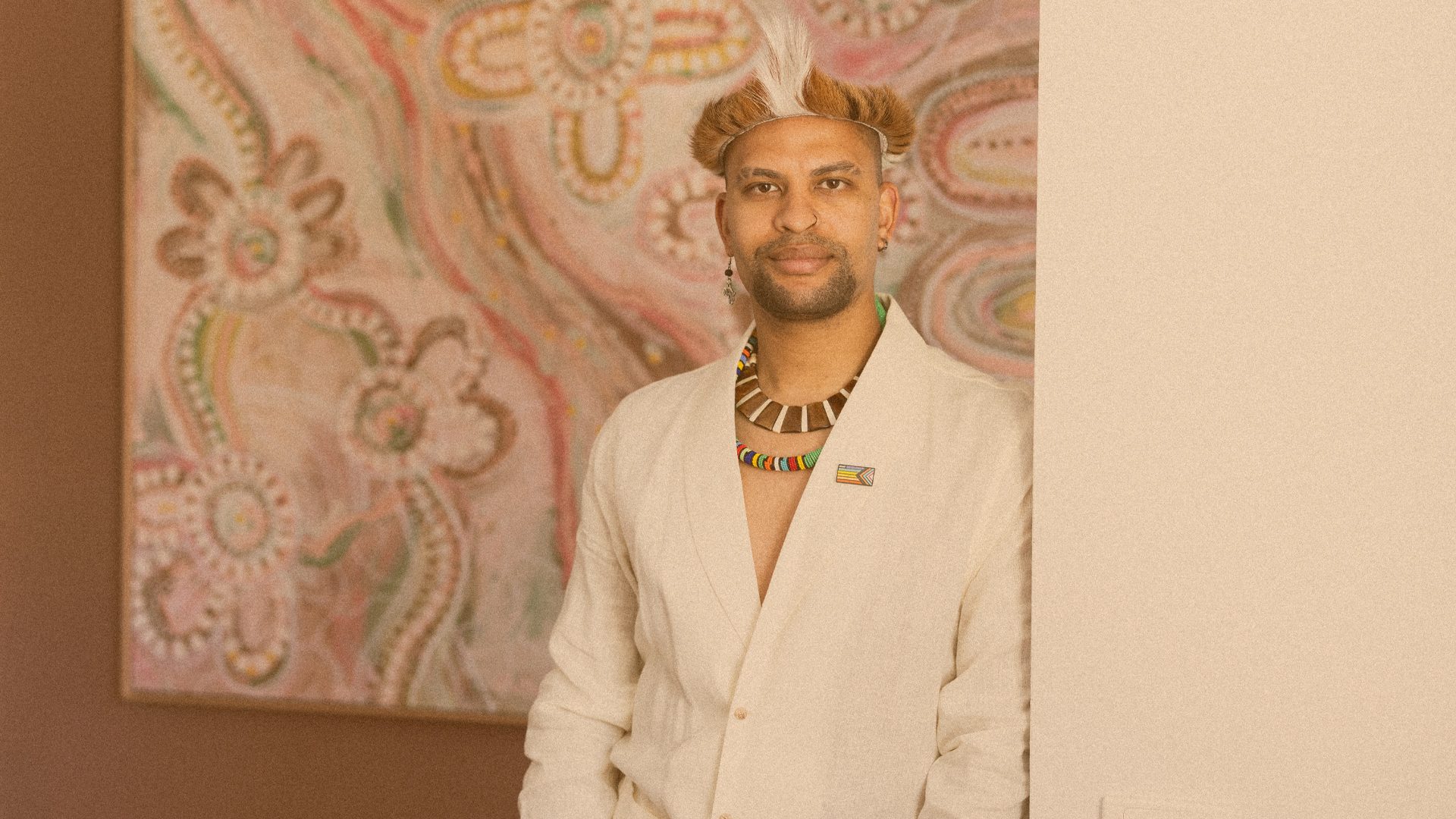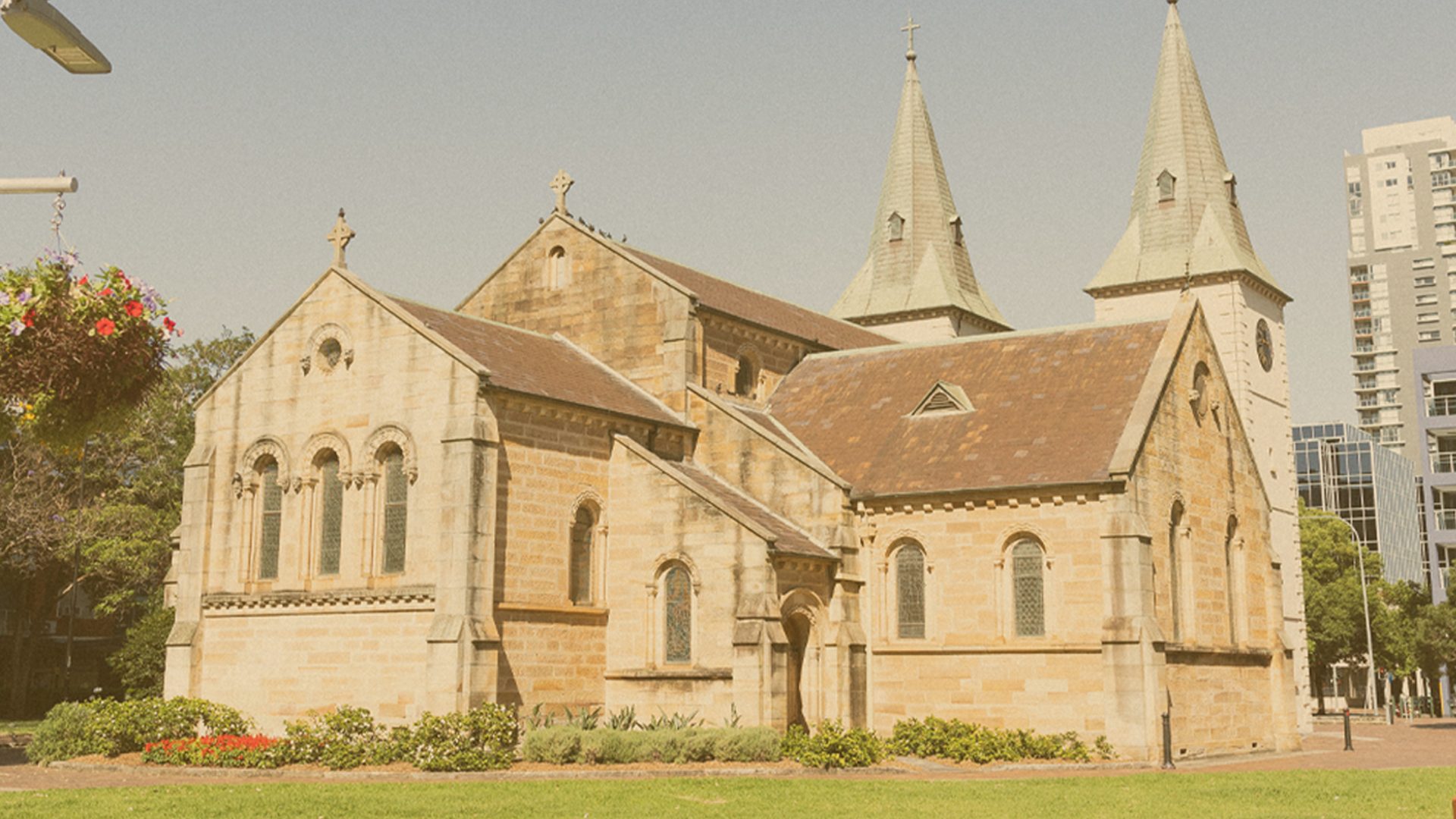Paving Parra

Working as a contractor on some sites around the revitalisation of Parramatta City brought Bruno Stramandinoli back to the area where he grew up.
Trying to find parking around Westmead Health Precinct is like pulling teeth. When I arrive at Leaf Café, I apologise for its location. Stirring a long black, Bruno Stramandinoli raises his eyebrows. ‘I thought you picked this place on purpose.’
Opposite the cafe entrance, a row of elevators carries academics and health professionals up and down the university building. In 2021, Bruno paved the elevator floors. Right outside where we sit, nurses on their lunch break sit on a raised deck centred around a teenaged tree. Bruno built that too.
I met Bruno through my partner Mason; they’re stepbrothers. When I have time to drop Mason, a nurse, off for his afternoon shift at Westmead Hospital we eat lunch together on the decked planter box. Bruno has been a landscaper since his early twenties and owns a small business. He grew up between Penrith and Pendle Hill but now lives in the Inner West, and in recent years he’s worked on some prominent projects in Parramatta CBD. I ask Bruno about the decking. Smiling, he pulls out his phone. In between photos of his 3 year old son Gabriel’s smiling face and blonde ringlets are pictures of dissected floors and bundles of steel.
A bona fide storyteller, Bruno analogises each step of the construction process. ‘The whole area (1.5 square metres of soil) is similar to what’s at Parramatta Square. The garden bed itself had to be waterproofed – a ball-ache of a job.’


To prevent any damage to the waterproofing, landscapers first use corflute liner. ‘It’s the same material as election placards, you know, the ones on fences that say, “Vote for such-and-such”.’ Next, the lining of Geotech fabric is like a coffee filter, allowing water to trickle through soil. The layer of sand is another filter (this time a Britta) and the actual tree itself is ‘the good stuff’. The layered sediment under the decking is as complex as it is unseen, but the gist is this: where water enters, water must exit.
Bruno’s dad Jo lives down the road from Mason and me in Pendle Hill, and this meet-up provides the perfect opportunity for Gabriel to spend time with his nonno.
‘My family settled in Granville — one of the first hubs of major migration after the war,’ Bruno says.
Jo’s own father, Bruno’s grandfather, had his immigration papers stamped with the occupation paesano (peasant). Stramandinoli is a cognome (surname) from the Calabrian town of Arena and shared by a cluster of families in southern Italy. Arena itself is Latin and speaks of the municipality’s imperial Roman history. Translated as ‘sandy plain’, it refers to gladiatorial rings whose porous grounds soak up blood and dismembered body parts.
I ask Bruno to tell me the first image that comes to mind when I say Parramatta? A sip of his long black follows, then he says, ‘The football stadium.’.
His response doesn’t surprise me. All sides of this blended family, from Penrith to Parramatta, love sports. Mason and Bruno’s dads are both diehard NRL fans. Bruno goes for the Eels. Back when it was Cumberland Oval, Jo Stramandinoli used to watch games in the old stadium with his cousin Frank who let Jo sit on his shoulders.
‘A lot of that nostalgia from my dad, I found a little infectious. The club itself is really cool, just the age of it.’ Bruno gives 1947 as the opening year. He looks up, stirs the dregs of his coffee, tells me to fact check. I don’t; I believe him. After Cumberland Oval burned down in 1981, it was resurrected as Pirtek Stadium. The NSW Government tore Pirtek down only to build it up again in 2019 and adorn it with a bumblebee CommBank logo.
I ask Bruno if he reckons Parramatta looks different to how it used to. ‘Oh, 100%,’ he says. ‘You can tell Parramatta’s changing. I reckon gentrification is often demonised, but I don’t necessarily think it’s a bad thing.’ I think of the Cantonese aunty who mends my clothes, her alteration studio wedged in a brown-brick unit between the Westfield and Service NSW. Every time I visit, she asks me the name of my grandmother’s hometown in Guangzhou.
Bruno continues, ‘Gentrification allows people to shape the suburb the way they want the place to be. It’s not just new people coming in.’
The scepticism must show on my face.



‘Parramatta used to be considered quite dodgy in a lot of parts, especially in the 90s. A lot of effort has been made to make it a nicer place to visit – it feels safer walking around. That’s gotta be a good thing,’ Bruno says. ‘Yes, it’s being gentrified, but it’s being done by its inhabitants and their future generations … and that may change as it gets more expensive to live here, but I feel like the growth is coming from within and not externally.’
I concede a nod – maybe my Cantonese tailors will still be here in 5‒10 years from now, asking me whether I’m married or how many siblings I have?
Before pausing the recording so Bruno can order another long black, I ask him about his work on Parramatta Square. When he returns, I admit that I only found out last week that the library is pronounced ‘five’, not ‘P-Hive’ like I’ve been saying this whole time. He chuckles, ‘Parra Square is huuuge. Building 4 is gigantic.’ His favourite spot is right outside the library. ‘I ate my lunch there every day on the job in 2021, where the concrete benches are.’
Last Christmas we stayed down the South Coast, where Mason’s dad and Bruno’s mum live, and I spent an evening stretching and compressing playdough with Gabriel. While I fed children’s putty through a facsimile coffee grinder, Bruno told me about doing the substrata prep work for Parramatta Square, about the concrete-embalmed steel grids lying beneath the paved surface.
Under the pavers, Parramatta Square is a floating floor built on pillars with soil-filled cavities that allow for trees to be watered and to take root. All this above a commercial carpark.
Asking Bruno about it now, he glances behind him, to where the decking is outside. ‘Think of Parramatta Square as a giant planter box,’ he says. ‘We had to create a slab on top of another slab. The roof of Parra Square’s underground car park had a bunch of steel rods going through the entire ceiling – a show of tensile strength on an immense scale.’
Layers upon layers of concrete, steel and pipe. ‘We made steel columns and filled them up with concrete to create concrete pillars – these piers.’ Bruno takes my notepad and sketches out a blueprint of the works. ‘Then we put in Ag Pipe and drainage cells. Just like a planter box, stormwater flows through a channel in the middle of the square.’
‘Once we fitted the Ag Pipes, we filled the channel with a rocky soil. On top of that, we put another layer of better rocky soil, a treated soil.’ Bruno draws out the construction steps in my notepad. Precast concrete beams were craned onto the site. Once the beams were assembled, like a giant IKEA kit, in went more steel, then concrete, then sand and then finally, the paving blocks. His sketch looks like an anatomical diagram of human skin.


Parramatta Square was ‘the most mentally challenging job’ Bruno’s ever worked on. He gets flashbacks sometimes – ‘that guy yelled at me here, this thing happened over there’. ‘There were so many eyeballs on that job, you kind of felt like the world was against you. The budget’s not helping you out, you have team members quitting left, right and centre. You’re starting work at six in the morning and not leaving till six, sometimes ten at night … for months.’
Bruno’s pavers are flat, smooth and in their predetermined places. Instead of jackhammers, rowdiness comes in the form of street preachers at the St John’s Cathedral end and council-appointed buskers on the other.
Visiting his accountant recently, Bruno was brought back to his own handiwork. ‘Coming back to Parramatta Square after almost a year was quite cool, seeing it in full swing, being used.’ At that, he finishes his second long black. There’s residue at the bottom of the glass – coffee grounds that bypassed the filter.
My own workplace is on the other side of Parramatta Square, where the old library used to be. Occasionally, I take my lunch outside, hoping to catch some sun or to watch people. Sometimes, I pick up a Philly cheesesteak sandwich from Harvey’s and plant myself at Bruno’s favourite spot outside the library. I watch public servants and university students on their lunch breaks, imagine the roots and cavities beneath my feet. Water bleeding through sand and the pavers Bruno laid, draining out a nervous system of pipes and steel.
About the Author
Deborah Prospero is an emerging writer living, working and studying on Dharug Country. An intersectional feminist of Uruguayan and Chinese-Australian heritage, she enjoys writing about people and their placemaking stories. Prospero’s work has been published by Refinery29, the Mami Watta Collections Journal and More Than Melanin. She is completing a Master of Literature and Creative Writing at Western Sydney University and is a recipient of the 2024 Varuna x Whitlam Institute Essay Residency.
About the Series
Parramatta Profiles is a writing and photographic series that profiles individuals across Parramatta communities. Drawing on art, music, religion, activism and sport, each snapshot captures life in this dynamic city. A collaboration between Powerhouse and the Writing and Society Research Centre, Western Sydney University, this project supports the development of student writers by providing an opportunity to work with professional editors and be published by Powerhouse online.



























